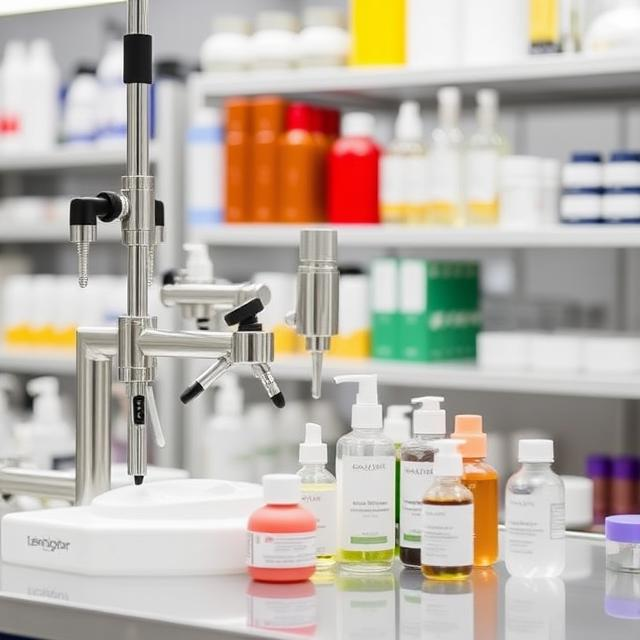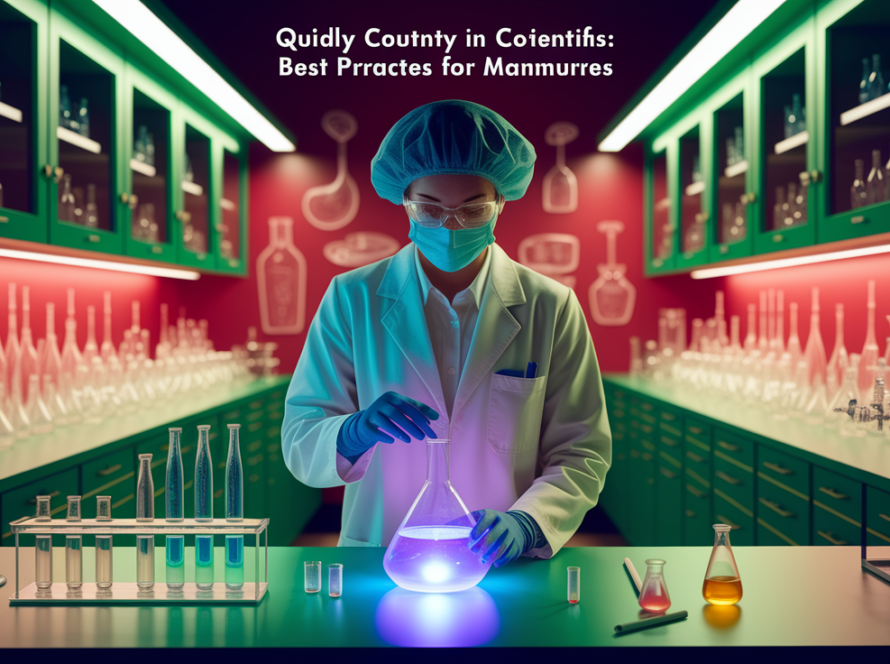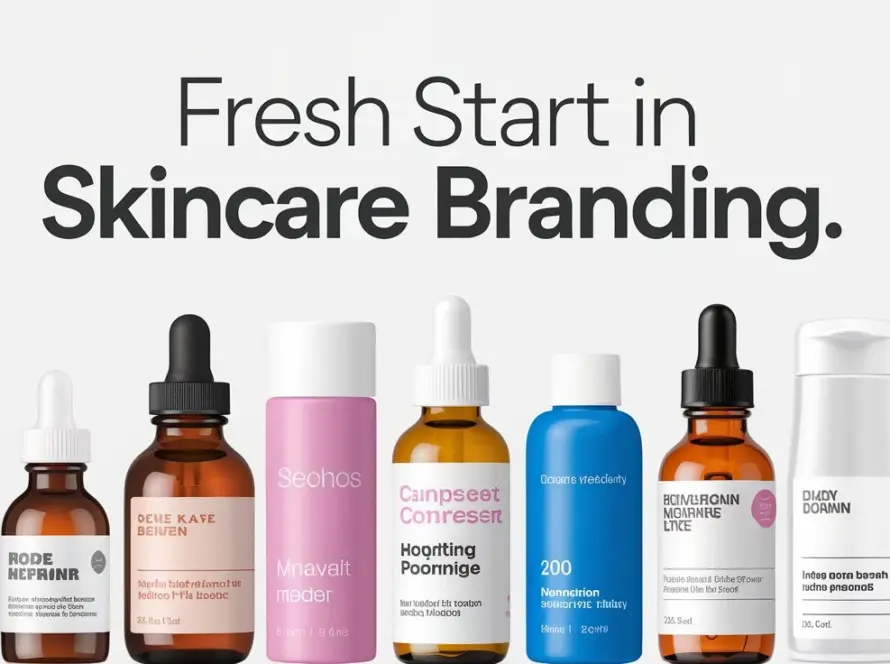In the world of skincare, the distinction between Active and Inactive Ingredients in Skincare plays a crucial role in how products perform. Understanding the functions of these components can have a big influence on the decisions you make, regardless of whether you are a professional in the skincare industry or just a fan of skincare products. You will be able to make smarter selections for your skin or for your brand with the assistance of this guide, which delves deeply into the definitions, benefits, and important differences between active and inactive compositions. In the field of skincare, let’s find out what it is that makes these components particularly important.
Table of Contents:
- What Are Active and Inactive Ingredients in Skincare?
- Definition of Active Ingredients in Skincare
- How Active Ingredients Benefit Your Skin Health
- Definition of Inactive Ingredients in Skincare
- The Role of Inactive Ingredients in Product Formulations
- Key Differences Between Active and Inactive Ingredients in Skincare
- How Active Ingredients Target Specific Skin Concerns
- The Supportive Role of Inactive Ingredients in Skincare Products
- Choosing Skincare Products: Evaluating Active and Inactive Ingredients
- Reading Labels: Identifying Active and Inactive Ingredients in Skincare
- The Impact of Combining Active and Inactive Ingredients on Skin Effectiveness
- Common Misconceptions About Active and Inactive Ingredients in Skincare
- Are Inactive Ingredients Really Inactive? Debunking Myths
- Royal Industries’ Expertise in Formulating with Active and Inactive Ingredients in Skincare
- How Royal Industries Innovates Skincare with Effective Ingredient Combinations
- Key Takeaways
- FAQs
What Are Active and Inactive Ingredients in Skincare?
When it comes to Active and Inactive Ingredients in Skincare,in the complicated world of formulas and marketing claims, it is simple to become disoriented and confused. The key to making well-informed decisions is to have a solid understanding of the components that make up the product and how they interact with one another. Active and inactive compounds are the fundamental components of every skincare product. These components perform unique yet interwoven functions that influence the efficacy, safety, and overall feel of a product.
Active Ingredients in Skincare are the powerhouse components—individual skin issues, such as acne, wrinkles, pigmentation, or dryness, are specifically addressed by these substances, which are referred to as “active ingredients.” Imagine that they are the most important components of your skincare routine, the ones that are working in the background to produce apparent effects. On the flip side, Inactive Ingredients in Skincare serve as the supportive crew. In spite of the fact that they do not directly treat skin problems, they play critical roles in the formulation, stability, and user experience of the product. Even the most powerful active components would not be able to perform to their full potential if they were not present.
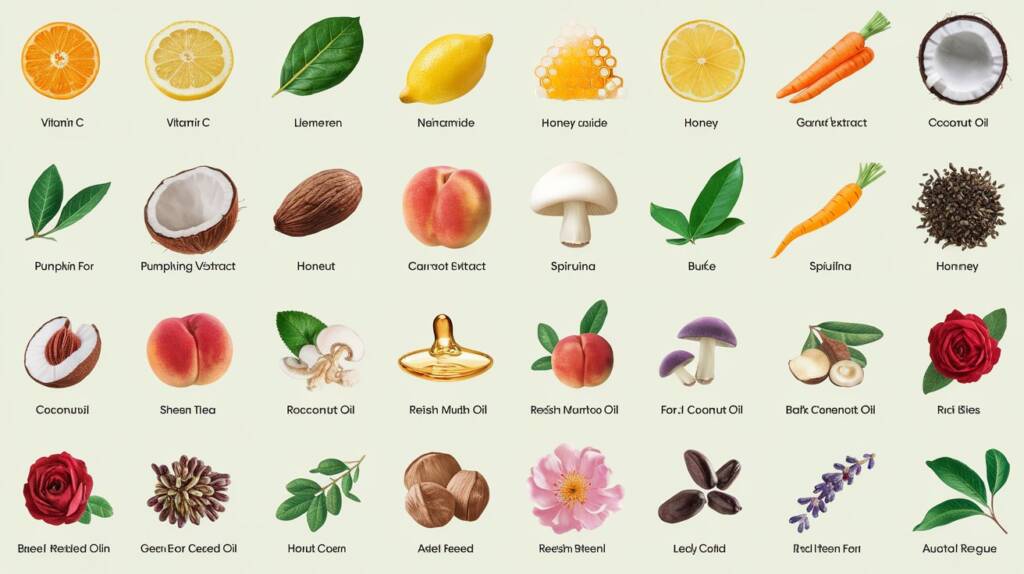
Definition of Active Ingredients in Skincare
The active ingredients in a skincare formulation are the most important components because they are the ones responsible for the transforming results that we look for in our skincare routines. Retinol, vitamin C, hyaluronic acid, and salicylic acid are some of the substances that are highlighted on product packaging. Other ingredients that are highlighted include salicylic acid. As a result of the fact that each active ingredient has a distinct function, ranging from the stimulation of collagen synthesis to the relief of inflammation, they are vital in the field of skincare.
The list of active ingredients in skincare products is extensive; nevertheless, having an awareness of the function of each ingredient will assist you in selecting products that are suitable for your skin to use. For instance, alpha-hydroxy acids (AHAs) such as glycolic acid exfoliate dead skin cells, resulting in skin that is brighter and smoother. Niacinamide, on the other hand, acts to balance out skin tone and is effective in improving barrier function. Knowing how to determine active ingredients in skincare products is crucial, as not all active ingredients are created equal—concentration, formulation, and compatibility with other ingredients all play a role in how well an active performs.
How Active Ingredients Benefit Your Skin Health
The benefits of active ingredients in skincare extend far beyond the visible. These components reach the skin on a cellular level, so addressing the underlying problems rather than merely the symptoms that are visible on the surface. For example, retinoids increase the turnover of cells, which helps to reduce the appearance of wrinkles and fine lines over time. Antioxidants, such as vitamin C, fight free radicals and protect the skin from the damaging effects of the environment.
On the other hand, it is not only about addressing certain concerns. A preventative function is also performed by the active substances. Zinc oxide and titanium dioxide are two examples of sunscreen components that protect the skin from the sun’s ultraviolet (UV) rays. Ceramides, on the other hand, are known to reinforce the skin barrier, making the skin more resistant to the effects of adverse environmental conditions. These essential skincare ingredients for healthy skin are what set effective products apart, helping to maintain your skin’s health in the long term.
Definition of Inactive Ingredients in Skincare
While active ingredients steal the show, Inactive Ingredients in Skincare are the unsung heroes that ensure the product works as intended. Despite the fact that these components do not have any direct therapeutic effects on the skin, they are incredibly important to the overall effectiveness of the formulation. Emulsifiers, preservatives, scents, and texture enhancers are examples of inactive ingredients. Each of these components plays an important part in ensuring the quality of the product and the overall experience that it provides to the user.
The role of inactive ingredients in skincare is multifaceted.The formulation is stabilized, the shelf life is extended, the texture is improved, and they even help in the distribution of the active ingredients to the targeted area of the skin. For instance, emulsifiers facilitate the mixing of oil and water components, resulting in a texture that is uniform and smooth, and it has a pleasant sensation when applied to the skin. On the other hand, preservatives inhibit the growth of microorganisms, which ensures that the product remains risk-free for usage throughout time. The efficiency of even the most potent active substances would be diminished in the absence of these various components.
The Role of Inactive Ingredients in Product Formulations
Components that are not active are like the glue that keeps a product together. They make it possible for the active components to perform their functions in an efficient manner. On the skin, they are the difference between a product that feels luxurious and one that feels oily, sticky, or heavy. They are the difference that makes the difference. For example, humectants such as glycerin draw moisture to the skin, which results in an increase in the skin’s level of hydration without providing direct treatment for any skin issue. It is because of this supportive action that active compounds such as Hyaluronic Acid are able to operate more effectively, which in turn allows for improved moisture retention.
How inactive ingredients enhance skincare products goes beyond just texture and stability. As a result of their ability to lessen the likelihood of irritation caused by powerful active ingredients, they are suitable for a wider range of people. As an illustration, aloe vera is frequently included in formulas that include high concentrations of acids in order to calm the skin and lessen the appearance of redness. One of the things that makes skincare products not only effective but also fun to use is the careful balance that is maintained between active and inert components.
Key Differences Between Active and Inactive Ingredients in Skincare
It is crucial for everyone interested in skincare, whether they are a consumer or someone who is in the business of making products, to have a solid understanding of the distinction between active and inactive chemicals. In contrast to active compounds, which are primarily concerned with delivering specific advantages, inactive substances are responsible for ensuring that those benefits are given in a reliable and secure manner.
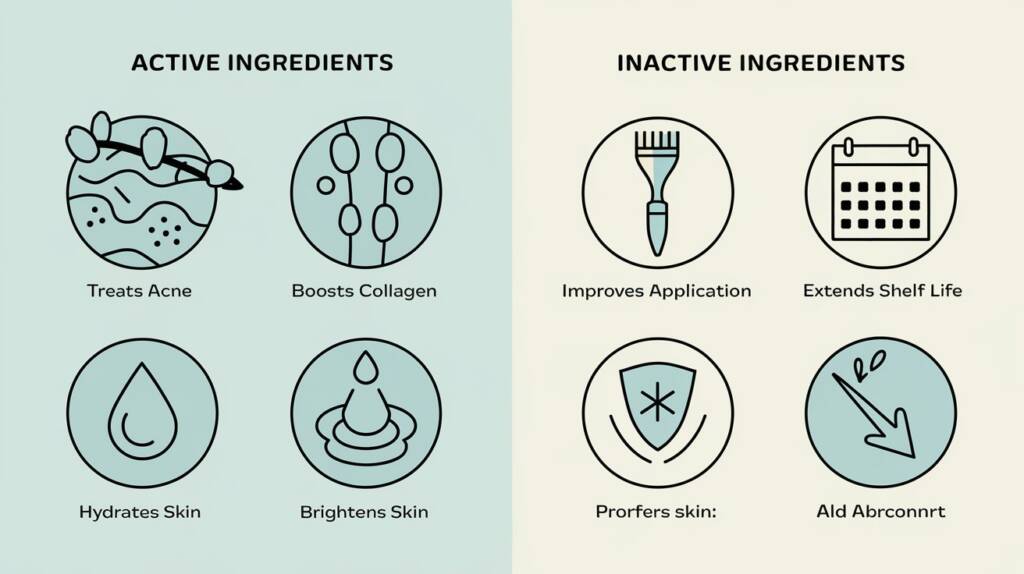
How Active Ingredients Target Specific Skin Concerns
In the world of skincare, active ingredients are the “heavy lifters,” as they are specifically developed to address certain skin conditions in a targeted manner. As an example, salicylic acid, which is a well-known active component, is effective since it penetrates pores and dissolves excess sebum as well as dead skin cells. This makes it an excellent choice for acne-prone skin. Vitamin C, on the other hand, is a brightening ingredient that helps reduce dark spots and gives the skin a beautiful shine without drawing attention to itself. The strategic use of these popular active ingredients in skincare products allows brands to create targeted solutions that cater to a wide range of consumer needs.
Active chemicals are not only effective in treating, but also in preventing. Sunscreens, which may contain active ultraviolet (UV) filters, are an essential component in the fight against photoaging and skin cancer. Antioxidants such as resveratrol and coenzyme Q10 shield the skin from the damaging effects of oxidative stress, which is an essential component in maintaining healthy skin over time. The best active ingredients for skincare are those that not only address immediate concerns but also contribute to maintaining healthy, resilient skin over time.
The Supportive Role of Inactive Ingredients in Skincare Products
While actives may be the stars, inactive ingredients benefits in skincare are just as crucial for a product’s success. The presence of these components guarantees that the active compounds will be given in a manner that is not only effective but also enjoyable. An example of a moisturizer that delivers both therapy and hydration is one that combines active ingredients like niacinamide with emollients like shea butter. This type of moisturizer offers a more holistic approach to skincare.
Inactive substances also have a big part in the aesthetics of the product, which can have an effect on the level of happiness experienced by customers. It is possible to maintain the potency of a serum, maintain the freshness of a cream, and ensure that a lotion has a silky smooth texture by using the appropriate balance of thickeners, stabilizers, and preservatives. As a result of this equilibrium between active and inactive components, a product is produced that not only functions properly but also satisfies the sensibilities.
Choosing Skincare Products: Evaluating Active and Inactive Ingredients
When doing an analysis of skincare products, it is essential to look beyond the claims made by the manufacturer and investigate the entire list of ingredients. Gaining an understanding of the components that make up skincare products can assist you in determining whether or not a product is suitable for your skin or the objectives of your business. A well-formulated product should achieve the ideal equilibrium between active and inactive components, giving effects without sacrificing either the user’s safety or their enjoyment of the product.
Reading Labels: Identifying Active and Inactive Ingredients in Skincare
Knowing how to determine active ingredients in skincare products starts with reading the label carefully. It is common practice to highlight and list active substances together with their corresponding concentrations. This provides a clear idea of the role that these compounds play in the product. Even though they are not typically shown in a prominent manner, inactive substances are just as vital to take into consideration. They provide information regarding the formulation of the product and can provide clues regarding the product’s texture, shelf life, and probable agents that cause irritation.
It is quite beneficial for people who work in the skincare industry to become proficient in the art of label reading. It gives you the ability to be more effective in communicating the benefits of your products to customers and to guarantee that your formulations are up to the standards set by the industry. Through the evaluation of both active and inactive components, it is possible to develop goods that are able to distinguish themselves in a competitive market and establish trust with your target audience.
The Impact of Combining Active and Inactive Ingredients on Skin Effectiveness
The synergy between skincare products with active and inactive ingredients is what makes a product truly effective. Compounds that are active are responsible for providing the treatment that is targeted, whereas compounds that are inactive improve the delivery, stability, and overall experience. An example of a serum that combines retinol, which is an active ingredient, with squalane, which is an inactive ingredient, provides both anti-aging benefits and hydration, so providing a balanced formulation that is effective for the majority of skin types.
Additionally, this combination makes it possible to customize products and innovate during the development process. By modifying the proportion of active to inactive components, companies are able to develop solutions that are tailored to meet certain requirements, such as those of individuals with oily complexions or sensitive skin. It is impossible to overestimate the significance of inactive substances in the skincare industry. These components are essential in guaranteeing that active compounds will operate to their full potential, thereby delivering to customers products that are not only efficient but also enjoyable to use.
Common Misconceptions About Active and Inactive Ingredients in Skincare
Despite their essential roles, there are many misconceptions about active and inactive ingredients in skincare that can lead to confusion.Whether you are selecting products for personal use or launching a new skincare line, having an understanding of the facts behind these substances enables you to make smarter decisions.
Are Inactive Ingredients Really Inactive? Debunking Myths
One of the biggest myths is that inactive ingredients are unnecessary or “fillers” that serve no purpose. In reality, inactive ingredients in skincare are critical to the formulation’s overall effectiveness. The active ingredients are able to perform more effectively and feel more pleasant on the skin as a result of their stabilizing, texturizing, and application-enhancing properties.
The idea that inactive substances do not provide any advantages to the skin is another widespread misunderstanding and mistake. On the other hand, a great number of inactive ingredients, such as ceramides, glycerin, and panthenol, provide a substantial contribution to the hydration and barrier function of the skin. Recognizing the importance of inactive ingredients in skincare helps dispel these myths and underscores their value in product formulation.
Royal Industries’ Expertise in Formulating with Active and Inactive Ingredients in Skincare
At Royal Industries, we take pride in our ability to blend active and inactive ingredients in skincare to create formulations that not only meet but exceed consumer expectations. We are able to develop products that give actual benefits without sacrificing quality because our approach is founded on a profound grasp of the science behind the ingredients as well as the formulations themselves.
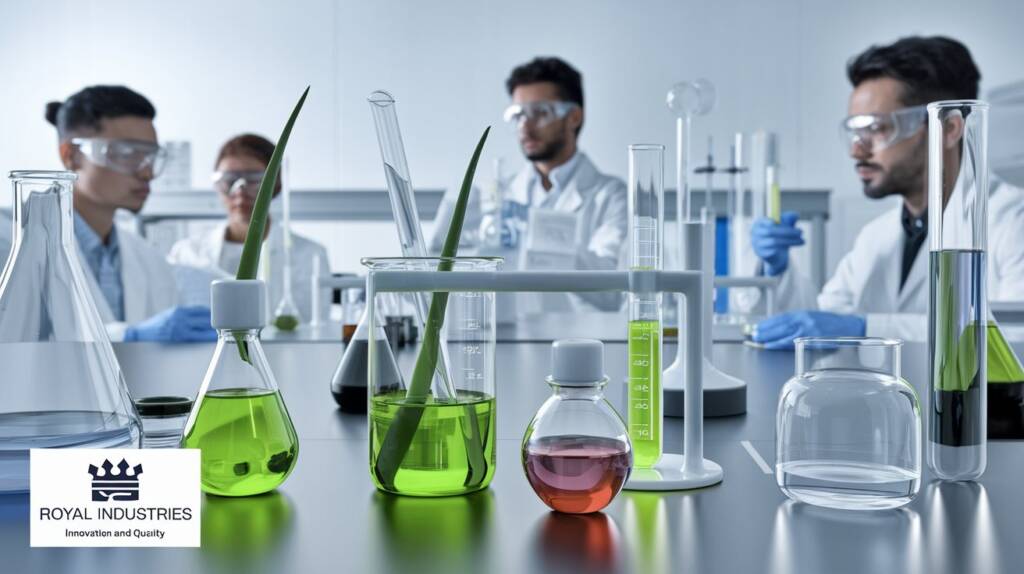
How Royal Industries Innovates Skincare with Effective Ingredient Combinations
Royal Industries stands at the forefront of innovation among cosmetic manufacturers in India, thanks to our expertise in creating balanced formulations. Our success lies in our ability to tailor skincare formulations: active vs inactive ingredients to meet the specific needs of our clients. Whether it’s a luxury serum or a basic moisturizer, we ensure that every product is carefully crafted to offer maximum effectiveness.
Our recent collaboration with Eteame demonstrated the power of thoughtful ingredient combinations, helping to establish a new benchmark in the industry. By focusing on active formulation vs inactive formulation, we developed a range of products that cater to diverse skin needs while maintaining a luxurious feel. This commitment to quality and innovation has made Royal Industries a leader in the world of third-party manufacturing skincare.
Key Takeaways
- Active ingredients in skincare directly address specific skin concerns, offering targeted treatments that improve overall skin health.
- Inactive ingredients in skincare play crucial supportive roles, enhancing product stability, texture, and user experience.
- Understanding the difference between active and inactive ingredients allows for better product selection and formulation.
- Combining both types of ingredients creates balanced skincare products that are effective, safe, and enjoyable to use.
- Royal Industries excels in formulating skincare products with active and inactive ingredients, providing high-quality solutions for brands looking to make their mark.
FAQs
Q1: What makes inactive ingredients in skincare important?
A1: Inactive ingredients in skincare are essential for stabilizing formulations, enhancing texture, and ensuring that active ingredients perform effectively and safely.
Q2: Can inactive ingredients offer any skincare benefits?
A2: Yes, many inactive ingredients in skincare like humectants, emollients, and barrier protectors contribute significantly to skin hydration and health.
Q3: How do active ingredients in skincare differ from inactives?
A3: Active ingredients in skincare directly target specific skin issues, while inactives provide support by stabilizing the formula, improving texture, and enhancing overall usability.
Q4: Why is choosing the right balance of active and inactive ingredients crucial for product effectiveness?
A4: A balanced combination of skincare formulations: active vs inactive ingredients ensures that products deliver their intended benefits without causing irritation or compromising the user experience.
Q5: How does Royal Industries ensure high-quality skincare products with active and inactive ingredients?
A5: Royal Industries employs advanced formulation techniques to optimize the balance of active and inactive ingredients, creating innovative products that cater to diverse skin needs while maintaining premium quality.
This expanded blog post enhances your understanding of active and inactive ingredients in skincare and highlights how Royal Industries’ expertise can help elevate skincare formulations to the next level.
For more information on how Royal Industries can support your Skincare Business. Chech out the story of our recent collaboration – Eteame X Royal Industries
For more details: How Royal Industries Empowered a Visionary Entrepreneur to Revolutionize Personal Care – Royal Industry
For More Such Blogs – CLICK HERE
Follow Us on Instagram for Daily Updates – royal_industries.ltd


